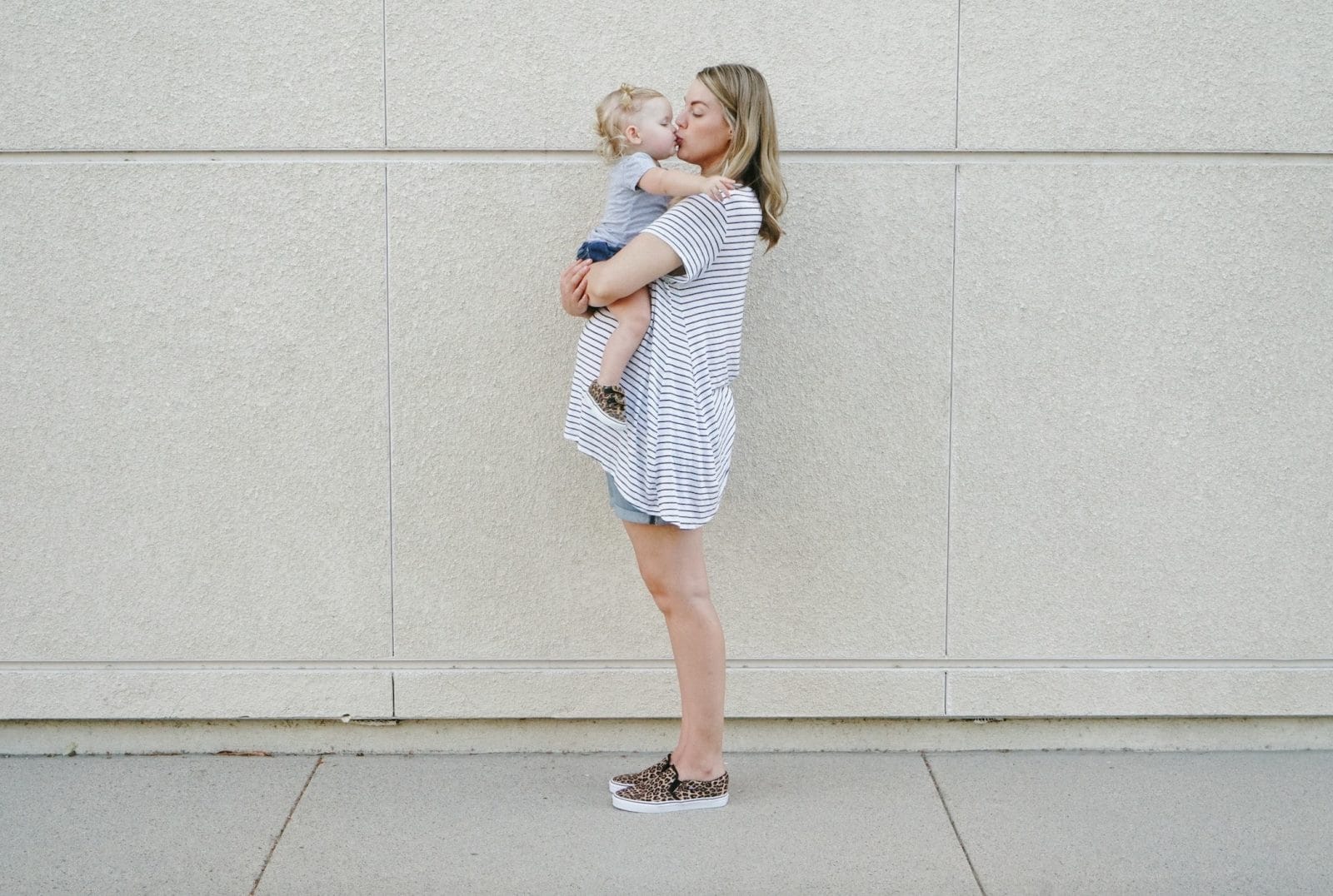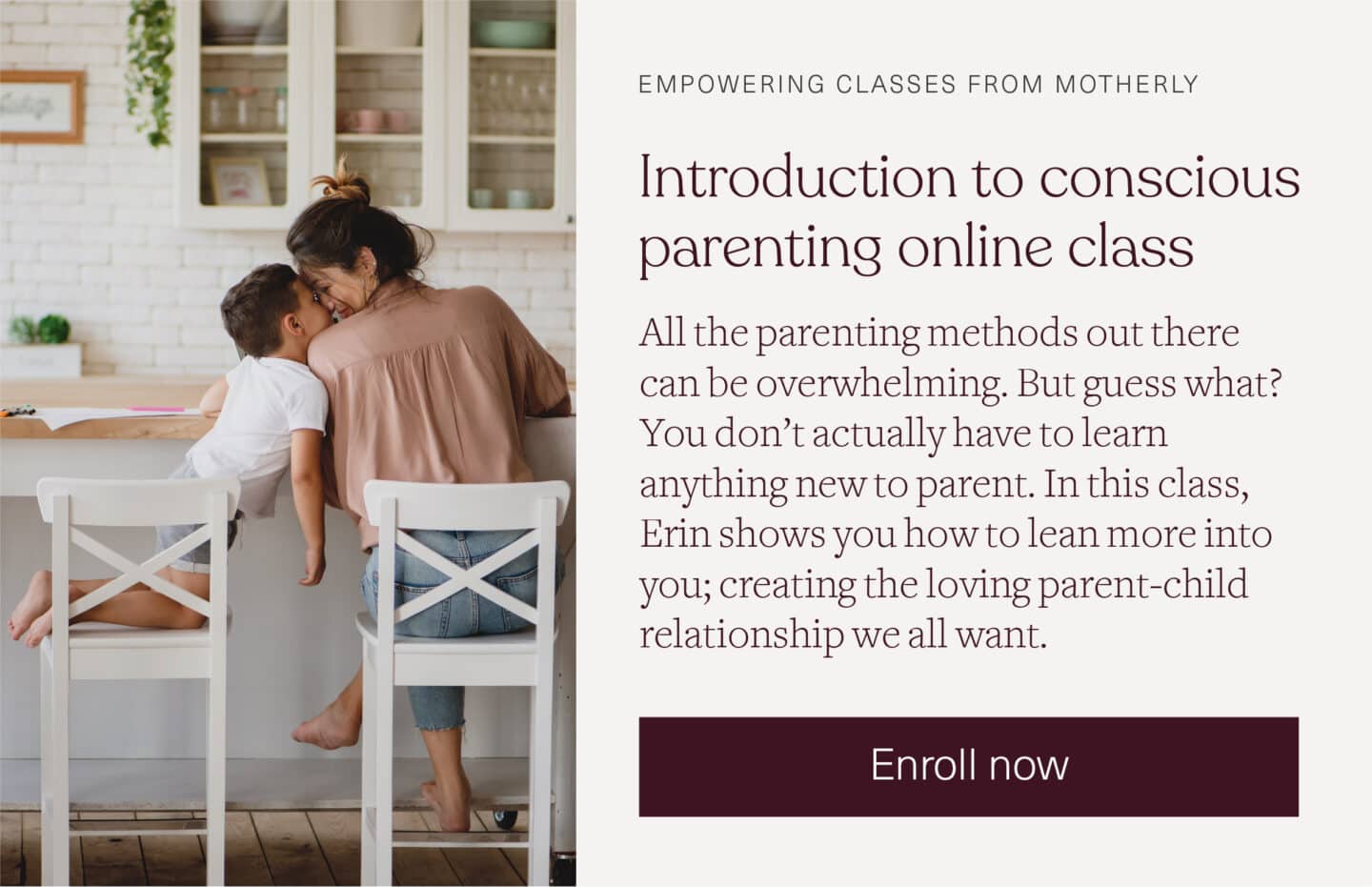5 powerful habits that make you a more peaceful parent

You don’t learn how to be patient in moments of crisis, but instead by anticipating what’s to come.
Table of Contents
How often do we have good intentions to be a more patient mom—and then we come up short… yet again? (Sigh.)
We want to yell less, enjoy our kids more, not stress the small stuff–we mean it when we say next time it’ll be different. We wait, thinking things will resolve themselves with good intentions.

But we’re still waiting. And still snapping. And the guilt and disappointment weighs heavy on our hearts.
No matter how many inspiring articles or books we read, in the heat of the moment, you can still snap, no matter what wise words you’ve read.
That’s because most of the things we read only touch upon tools to practice in the midst of the meltdown. But that’s only part of it.
We know we should breathe deep but in the midst of a meltdown (ours or our kids) we rarely remember to breathe. We just react. And it’s not your fault, it’s our hardwired habit.
To break that habit, it requires intention to train our mind BEFORE chaos strikes.
Here is your new and improved five-step plan to help you cultivate patience and become the peaceful mama you desire to be.
1. Start 15 minutes early
A lot of our stress and impatience comes from constantly rushing through our day.
Possibly the most patience-testing time for moms is when we are trying to transition our kids.
Out of bed. To school. Get homework done. To the car. To bed.
Instead of setting ourselves up for disappointment, frustration or aggravation, plan to start 15 minutes early.
When we give ourselves a buffer, we don’t put the added pressure of feeling late and delayed on our shoulders.
Planning in that extra buffer time allows time to relax and be more patient as unexpected events arise.
For example, I know my son doesn’t like to be rushed from the moment he wakes up to go out the door for school. I give us a 15-minute buffer, so if the unexpected meltdown hits, I don’t panic and get impatient. Which means I must put him to bed a little earlier on most nights.
Of course meltdowns aren’t an everyday thing, so on the days things go smoothly, we have a pleasant 15 minutes of playtime before we get out the door and start our day.
And as a bonus I find that those simple and ordinary moments I’m present and patient tend to be the most memorable moments of my day.
Of course this won’t ALWAYS work, but on most days, this keeps me peaceful and my son happy.
2. Don’t multitask
Often times the root of our impatience is because we’re not “all there.” We are distracted while trying to do too much all at once and not fully paying attention to any one particular thing or person.
Being fully present and “all there” with your children eliminates being stuck in our mind and allows us to fully enter what’s happening in this moment.
I find that when I am feeling stressed about “waiting” or when I am prone to snap over some behavior, I am usually focused on something else than what is in front of me.
My son could be taking a long time taking a bath—and I’m already worried about brushing teeth, getting the dishes put away and wondering if we are ever going to get to bed on time. But, if I step back and try to do one task at a time, I am less likely to lose my temper and more likely move through the present situation with focus and patience.
The trick to getting present is getting out of my head and into my body. I take a few deep breaths in through my feet and out through my head. This quickly grounds me into my body and into the moment.
3. Breathe together
Meltdowns are emotionally draining for both you and your child. When we become angry, we are not best place to make rational decisions. Why? Because any strong emotion will block clear, rational thinking.
Instead of trying to talk and rationalize with your child in the midst of chaos, just breathe together.
If there is anything I’ve learned in my seven years of teaching mindful breathing to kids, it’s that we can’t expect our child to practice deep breathing in the moment of chaos unless they have practiced the technique when they are happy and playing.
In moments of meltdowns (yours or there), it’s important for you and your child to know that feeling intense emotion is OK. So use this script: “I see you are feeling angry. You are safe to feel angry and mommy loves you very much. Why don’t we breathe together to feel better.”
Even if your child doesn’t follow your lead with the breathing, you model the calm breathing. If anything, it will help you stay centered and move through whatever emotion is being triggered within you from their outburst.
Try this breathing technique: Breathe in through your nose for four counts, hold the breath for a heartbeat and exhale the breathe through your mouth for eight counts slowly.
Counting in your mind just ensures your “thinking brain” is still engaged, which will further dilute any anger.
The natural breathing response when you become exasperated is to take a sharp in-breath and keep breathing in—which is how we breathe when we are angry or anxious. We naturally sigh (an extended out-breath) when we become stressed—which is nature’s way of helping us destress.
You can teach this to your kids by practicing “hot chocolate breath” during playtime. Tell them they have a cup of hot chocolate in their hands, but it’s much too hot to drink. Tell them to take a deep breath in and blow their hot chocolate to cool it down. Take a deep breath through your nose and blow out your mouth in a long and slow breath into your cupped hands so they can feel their breath.
4. Take a break and let them know you love them
When we respond poorly to our children’s emotions (with anger, frustration, rudeness, annoyance, etc.) it truly rocks their world.
Our children need stability, to feel safe, to feel accepted despite their emotional outbursts—and to know they are loved in those moments difficult emotions are taking over their little bodies.
When we display anger or impatience, we teach them it’s not acceptable for them to feel uncomfortable emotions. If we walk away in anger, they misinterpret it as rejection or abandonment. When we stifle or make our children feel bad about getting upset, they may grow up to learn to repress and numb uncomfortable emotions.
Being mad doesn’t teach our children anything except, “If Mom can fly off the handle, so can I.”
If we can’t respond in LOVE in the moment, it’s absolutely OK to walk away and take a little break to calm down and postpone a response.
Just let your little ones know that you need a break and preferably let them watch you breathe it out or do jumping jacks or whatever you need to feel centered.
Be honest with your child about how you feel: “Mommy feels frustrated and she is going to get some fresh air. Mommy loves you very much and when you calm down and I calm down, then we’ll play together again. “
And as quickly as you feel calm, reconnect with your little one so you can compassionately help them through their feelings too.
5. Take peaceful pauses
The level of patience we bring to an unexpected challenge has a lot to do with how many peaceful pauses we have accumulated throughout the day.
Transforming daily mindless routines like brushing your teeth, opening the car door or sipping your cup of tea are all opportunities to infuse taking a peaceful pause. When we focus on infusing as little as one minute of peaceful resets throughout our day, we have a huge peacefulness reserve when a challenging situation hits.
Setting the intention to take 30 seconds to a minute to reset, refocus and re-energize throughout your day means you’re ready to take on any challenge with calm, clarity and focus.


































